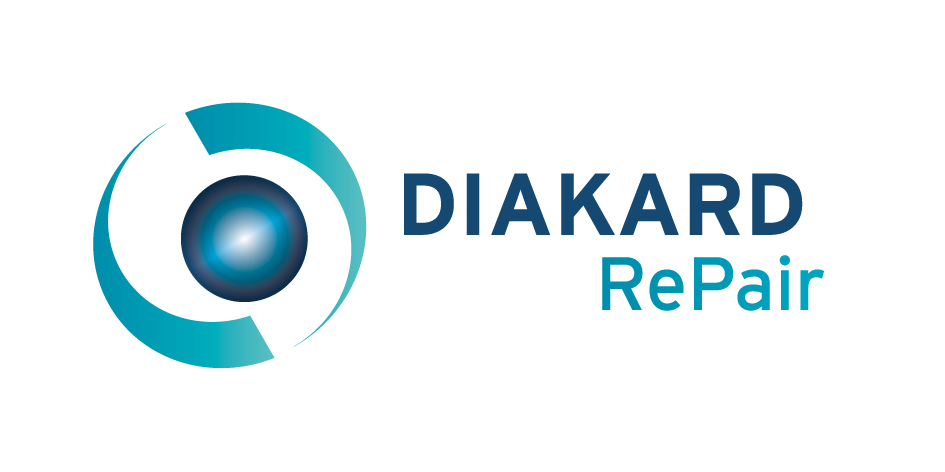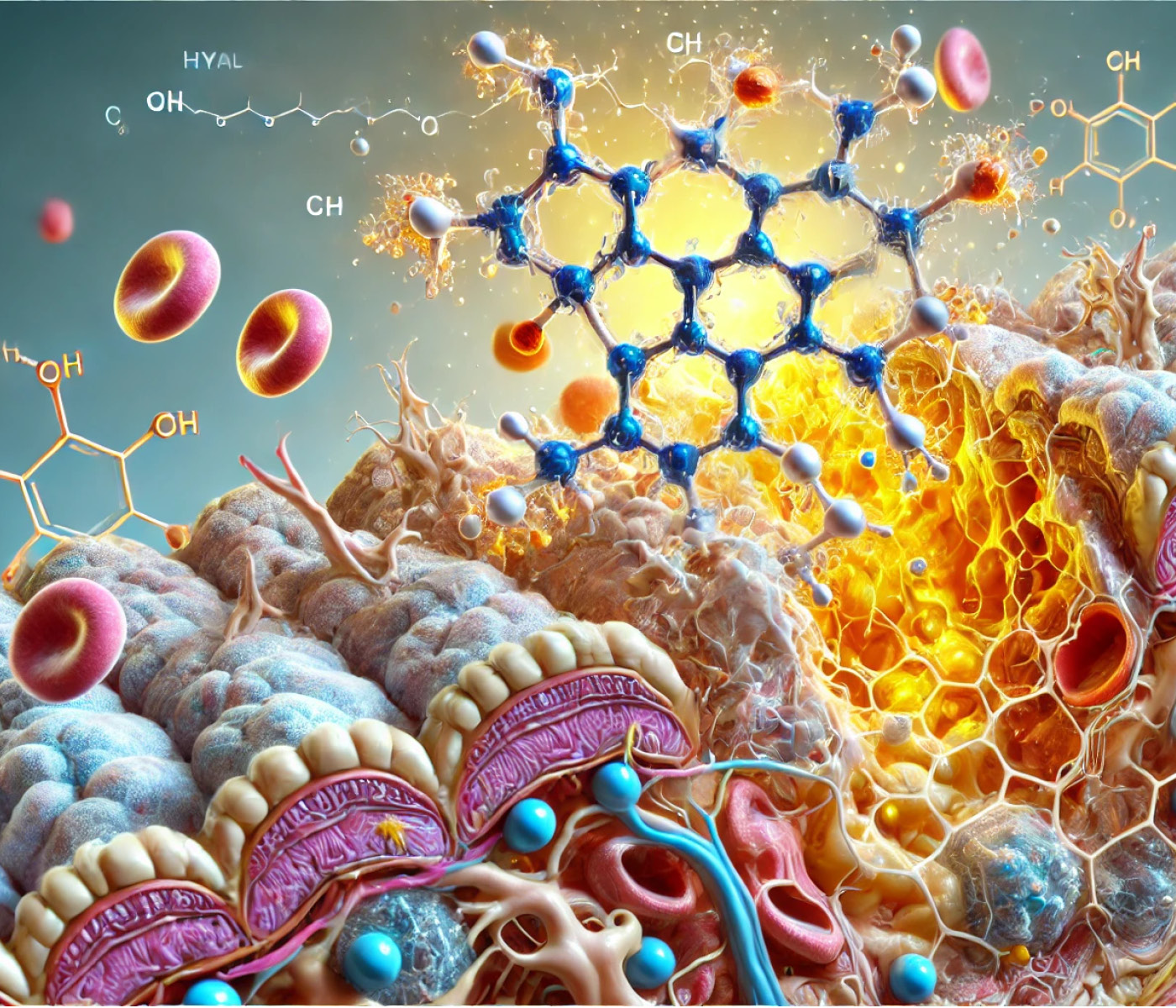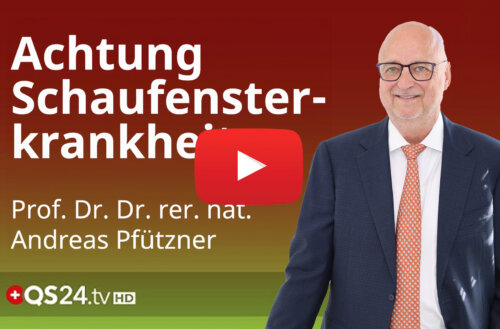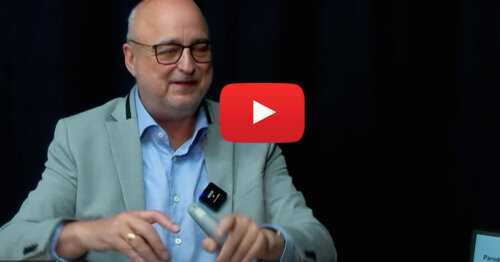DIAKARD RePair therapy
Innovative therapy for the treatment of atherosclerosis

Introduction to DIAKARD RePair Therapy
Professor Dr. Dr. Andreas Pfützner and the Pfützner Science & Health Institute (PSHI Praxis GmbH with affiliated private practice) in Mainz have developed RePair, a promising therapy for the treatment of atherosclerosis (calcification of the arteries).
read more
This widespread disease is one of the most common causes of death in the western hemisphere, especially in people with diabetes, who often suffer heart attacks or strokes.
The therapy is based on the enzyme hyaluronidase and aims to repair damaged blood vessels and thus improve vascular function. Originally developed in the 1960s in the former GDR, this method was forgotten in the 1980s when other treatment options such as stents became popular. Hyaluronidase is not yet approved for the treatment of atherosclerosis (but probably for other indications), and the therapy is therefore currently considered experimental, Prof. Pfützner has been using this treatment since 2015 with remarkable success in difficult-to-treat atherosclerosis (e.g. “Mönckeberg sclerosis”), including patients with “pronounced” hypertension and diabetic foot syndrome.
The treatment consists of several infusions that make the vessel walls more elastic and promote blood circulation. An impressive case study shows a patient whose leg was at risk of amputation due to a blood clot. After the RePair therapy, her ulcer healed and the blood was able to pass through the formerly complete by closed arteries. Prof. Pfützner points out that this therapy can be used in cases of atherosclerosis that have not yet been treated and is also well tolerated. However, RePair therapy does not treat the basic causes of atherosclerosis, which is why further measures are necessary for long-term success.
"
The repair mechanisms of the blood vessels can be restarted. This can, for example, lead to cholesterol in the vessel wall to be broken down and removed internally.
Who can be benefit from RePair?
RePair therapy is aimed at patients with severe atherosclerosis for whom conventional treatments are no longer effective or possible.
read more
It is particularly suitable for people with pronounced vascular calcification, high blood pressure and serious diabetes complications.
How does it work?
RePair therapy aims to restore the elasticity and permeability of damaged blood vessels that have become hardened or blocked by atherosclerosis.
read more
By infusing the enzyme hyaluronidase, the structure of the vessel walls is renewed, which activates the body’s own repair system and promotes the breakdown of cholesterol deposits.
Specifically, RePair therapy does the following:
Improve vascular elasticity:
The vessel walls become softer and more elastic, which promotes blood flow and often lowers blood pressure.
Promote blood flow:
The therapy helps to keep constricted or blocked vessels clear and restore blood flow to the affected areas.
Prevention of vasoconstriction:
Regenerating the vessel walls reduces the risk of new deposits forming, which can reduce the risk of heart attacks or strokes in the long term.
Improving the healing process for serious vascular diseases:
In cases where other treatments have been exhausted, RePair therapy has been able to promote wound healing and and thus e.g. prevent amputations.
The therapy is used in severe cases to slow the progression of atherosclerosis and improve quality of life.
Which side effects can occur?
RePair therapy, which is based on the application of the enzyme hyaluronidase, is generally considered to be very well tolerated.
read more
In the clinical applications that have been carried out since 2015, there have been hardly any significant side effects. Even in the past, when higher doses of hyaluronidase were used, no serious negative effects occurred.
As with any therapy, possible side effects cannot be completely ruled out at this stage.
In very rare cases, reactions to the infusions may occur, such as
Allergic reactions:
Skin rashes, itching or redness, which could indicate intolerance to hyaluronidase.
Local reactions:
Pain or swelling at the infusion site
Circulatory reactions:
In rare cases, short-term changes in blood pressure or other circulatory problems could occur, although the therapy is often associated with a reduction in blood pressure and this is often therapeutically desirable.
It is therefore important that patients are closely monitored during treatment in order to detect possible side effects at an early stage. For patients who are sensitive to hyaluronidase or infusion therapies, the treating physician must be appropriately cautious and consider alternative therapy options.
Despite these very rare side effects, RePair therapy is considered to be very well tolerated and offers a promising treatment option for severe atherosclerosis.
How RePair conducted?
RePair therapy is carried out in several well-structured steps and essentially consists of infusions of the enzyme hyaluronidase, which are administered over a period of two to three weeks.
read more
Preparation and diagnosis:
First, a very comprehensive physical examination and laboratory diagnostics are performed to determine if RePair therapy is appropriate for the patient. At this stage, the severity of the atherosclerosis and the patient’s general state of health are assessed and evaluated.
Infusion treatment:
The treatment itself consists of several infusions (usually around 10 infusions) administered over a period of 2 to 3 weeks. These infusions contain the enzyme hyaluronidase, which is infused directly into the bloodstream.
Mechanism of action:
The enzyme hyaluronidase has a targeted effect on the vessel walls and the deposits in the arteries. It breaks down hyaluronan (a main component of plaques) and promotes the breakdown of cholesterol deposits. This makes the vessel wall more elastic again, which can lower blood pressure and improve blood flow. As a result, the body is stimulated to repair the damaged vessels itself.
Monitoring during treatment:
During the infusions, the patient is continuously monitored to ensure that the treatment is well tolerated. In particular, blood pressure is monitored, as the therapy can often lead to a reduction in blood pressure.
Aftercare and restructuring phase:
The infusion series is followed by a follow-up phase in which the effect of the therapy is checked. Over the next few months, the vessels can continue to regenerate and vascular elasticity should increase. A further check using imaging techniques can help to document the success of the treatment.
Long-term monitoring:
Even after the infusions have been completed, the condition of the vessels is monitored regularly to ensure that the therapy is producing lasting improvements. Depending on the progress, follow-up treatments or preventive measures may be necessary to prevent atherosclerosis from progressing again.
Overall, the therapy is well tolerated and non-invasive, although it is considered an experimental method as hyaluronidase is not currently approved for the treatment of atherosclerosis. It is mainly used in severe cases where conventional treatments do not provide sufficient results.
Do I have to come to Mainz for this?
Yes, RePair therapy is currently carried out in the practice of Prof. Dr. Dr. Pfützner in Mainz under his direction. In Switzerland, we work together with the Swiss Mountain Clinic in Castaneda (www.swissmountainclinic.com) for RePair therapy. A network in Germany, Austria and Switzerland is currently beeing formed.
read more
As this is an experimental and specialized therapy, it requires personal treatment and intensive monitoring by experienced professionals who have integrated this treatment into clinical practice.
It is quite possible that other colleagues in other specialized institutions will also offer the treatment. Interested patients are welcome to contact the Institute in Mainz to clarify whether the therapy is suitable for them and whether there may be alternative locations that also offer RePair treatment in their area.
What is the difference to conventional therapy?
While conventional procedures such as stenting or balloon dilatation use mechanical interventions to open blocked vessels, RePair therapy is an experimental therapy that focuses on renewing the vessel structure and restoring vascular elasticity in the long term.
read more
The method supports the body’s own repair mechanisms, but does not eliminate the cause of atherosclerosis. For lasting success, a combination with preventive measures is required.
An example of the effectiveness of RePair therapy
An impressive example shows a patient whose leg was about to be amputated due to an occlusion of the lower leg artery.
After RePair therapy, her ulcer healed and the blood vessels had been reopened allowing for blood flow in the foot again.
Conclusion of the DIAKARD RePair therapy
RePair therapy offers people suffering from a severe form of atherosclerosis a promising option to improve vascular health when conventional therapies have been exhausted.
Although experimental, the therapy shows very good tolerability and a positive effect on vascular elasticity.
Case study from our practice
Diabetic foot syndrome
When amputation becomes unavoidable
Case study RePair
56-year-old K.W. has been living with type 1 diabetes for over 40 years and suffers from severe diabetic foot syndrome.
Due to a complete occlusion of the fibular artery, a foot ulcer on her left leg is not healing. Despite the measures taken so far, there is no alternative: the physicians have already given the indication for an amputation below the ankle joint.

Hyaluronidase in action
The medical diagram shows how the enzyme breaks down the hyaluronic acid and interacts with damaged tissue, reducing or even dissolving the thickening of the blood vessel walls and the plaques.
We are happy to support you!
Visit us and experience how state-of-the-art diabetology care and a pleasant practice atmosphere go hand in hand. We look forward to welcoming you and providing you with first-class medical care – with a smile!



